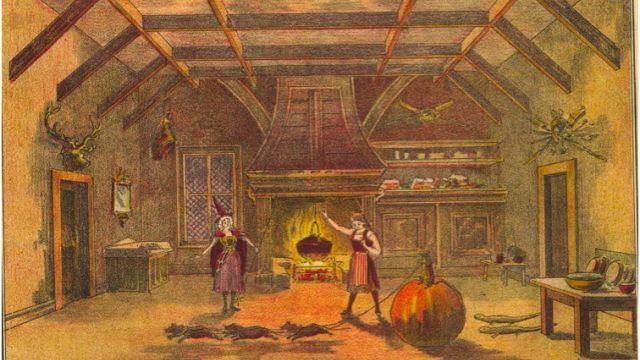The Lost Art of Painting A Scene
In the 19th century scenic designers were talented artists who quickly produced temporary masterpieces for their managers. It was a laborious process involving precise brushwork and intense concentration.
One of the most famous and esteemed scenic designers of the time was George Gordon, who created many and varied scenes for Australian audiences through his 15 year tenure. They ranged from common English indoor parlours to exotic locales and climes.
Born in Scotland in 1839 his talent was recognised when he was very young and by the time he was 18 he was the scenic artist in charge of the painting loft at a Bristol theatre. At 21 he was in London, working for the major theatrical entrepreneurs. His artistic talent was such that he was asked by the Royal Academy to give up scene design and pursue fine art.
He declined the offer and in 1879 joined a London Gaiety company tour of Australia. His set designs were lavishly praised by the Australian press. He stayed in Australia with his family and when JC Williamson formed his company in 1882, Gordon was immediately hired as the resident scenic artist.
At the time, Australian shows were often reproductions of successful overseas performances. When the Williamson company bought the rights of a foreign production they also included pictures and drawings of the sets. Artists produced an accurate replica of the original show but interpreted the material in a way that appealed to an Australian audience.
The scenic artist was responsible for act drops, back cloths, ground cloths, wings and set pieces. At the Princes Theatre in Melbourne the canvas for a scene was placed in a large frame, which was raised or lowered with a winch. A slit in the floor allowed the canvas to be manoeuvred onto the stage once each part was painted.
Firstly the designer sketched the scene using charcoal and then piece by piece painted the required picture. As the drop was painted piece meal, the artist had to keep a vision of the completed cloth in his mind. Assistants, known as splodgers, supervised by the chief scenic designer, did much of the actual painting.
After the scene was lowered to the stage, the final touch ups were done and the whole process was repeated in order to produce another scene.

Gordon’s work was characterised by his devotion to realism. Whilst working in London he had travelled to Venice to get accurate sketches for a production of the Merchant of Venice. He favoured warm earth tones in his scenes and was known for the speed of his painting.
One of his early works for J C Williamson was the pantomime Aladdin, which was performed at Christmas 1883 at the Theatre Royal in Melbourne. The pantomime was based on a London production but liberally incorporated topical references. Gordon was responsible for scenes including A Street in Pekin (sic), the enchanted cave and Aladdin’s Palace.
Contemporary etchings, which featured in the programme, indicate that Gordon abandoned his traditional earthy tones for vivid reds, blues and yellows for the show. However they also show a remarkable devotion to detail, especially in the street scene of Pekin.
The faithful architectural reproductions of buildings complemented the exact details of the costume designs to lend authenticity to the production.
Ten years later, Gordon’s artistry was a feature attraction in pantomimes. Pre publicity for Cinderella at the Lyceum in Sydney at Christmas 1894 highlighted Gordon’s scenes. By this time the artist had the confidence to follow his own vision. His scenery for Cinderella’s Kitchen featured yellows, oranges and browns and this was echoed throughout the production.
In 1899, Gordon fell heavily after alighting from a tram in Melbourne. He died on his 60th birthday some days later and Australia lost one of its finest scenic artists. It was fitting that his demise came at the end of the century because the next decade saw many changes in the art of scenic design.
The introduction of electricity, the advent of moving pictures, and further development of technology caused many changes in the perception and treatment of scenic designers. Whilst those, including his son, who worked for the larger companies, were still treated as artists, many who did not have that pedigree were treated as contract labourers.
Fortunately echoes of Gordon’s work live on, in effusive newspaper descriptions of his scenes and the rare photographs available in the bowels of Australia’s museums.
Leann Richards
Read more Stage Whispers history stories www.stagewhispers.com.au/history
See more articles by Leann Richards at www.hat-archive.com
Visit Leann's blog www.hat-archive.blogspot.com/
Images: Cinderella 1894-95 (top), Aladdin -1883-84
Originally published in the July / August 2010 edition of Stage Whispers.
To keep up with the latest news and reviews, like Stage Whispers on Facebook, or follow us on Twitter

